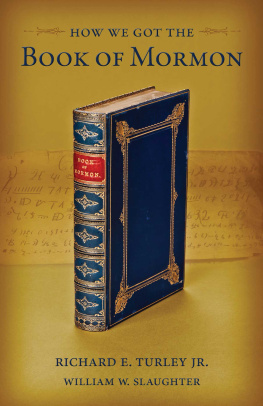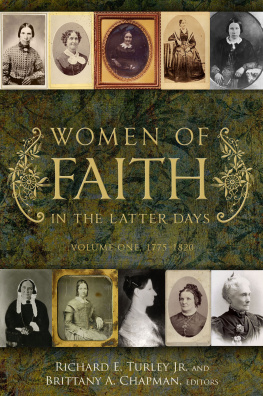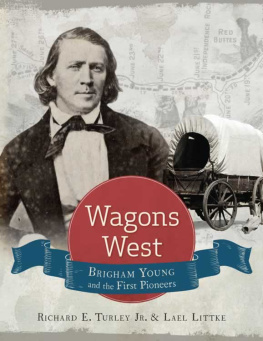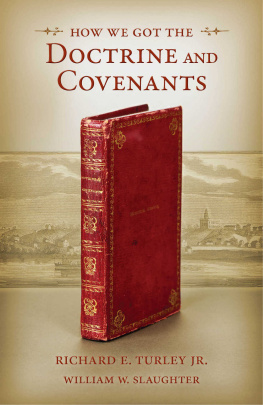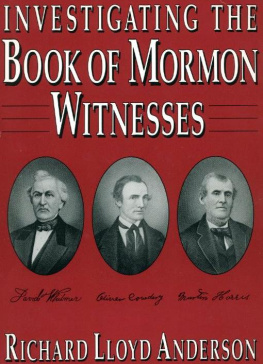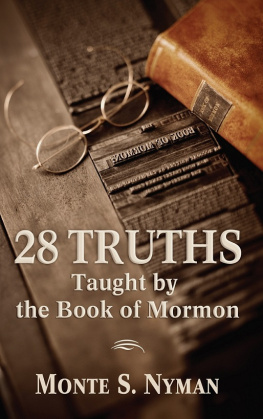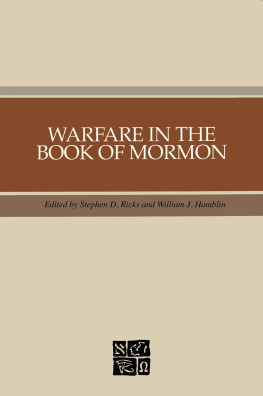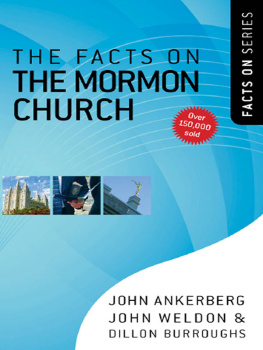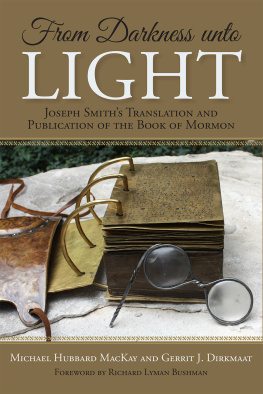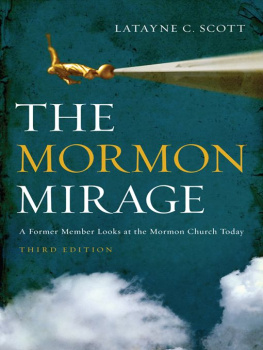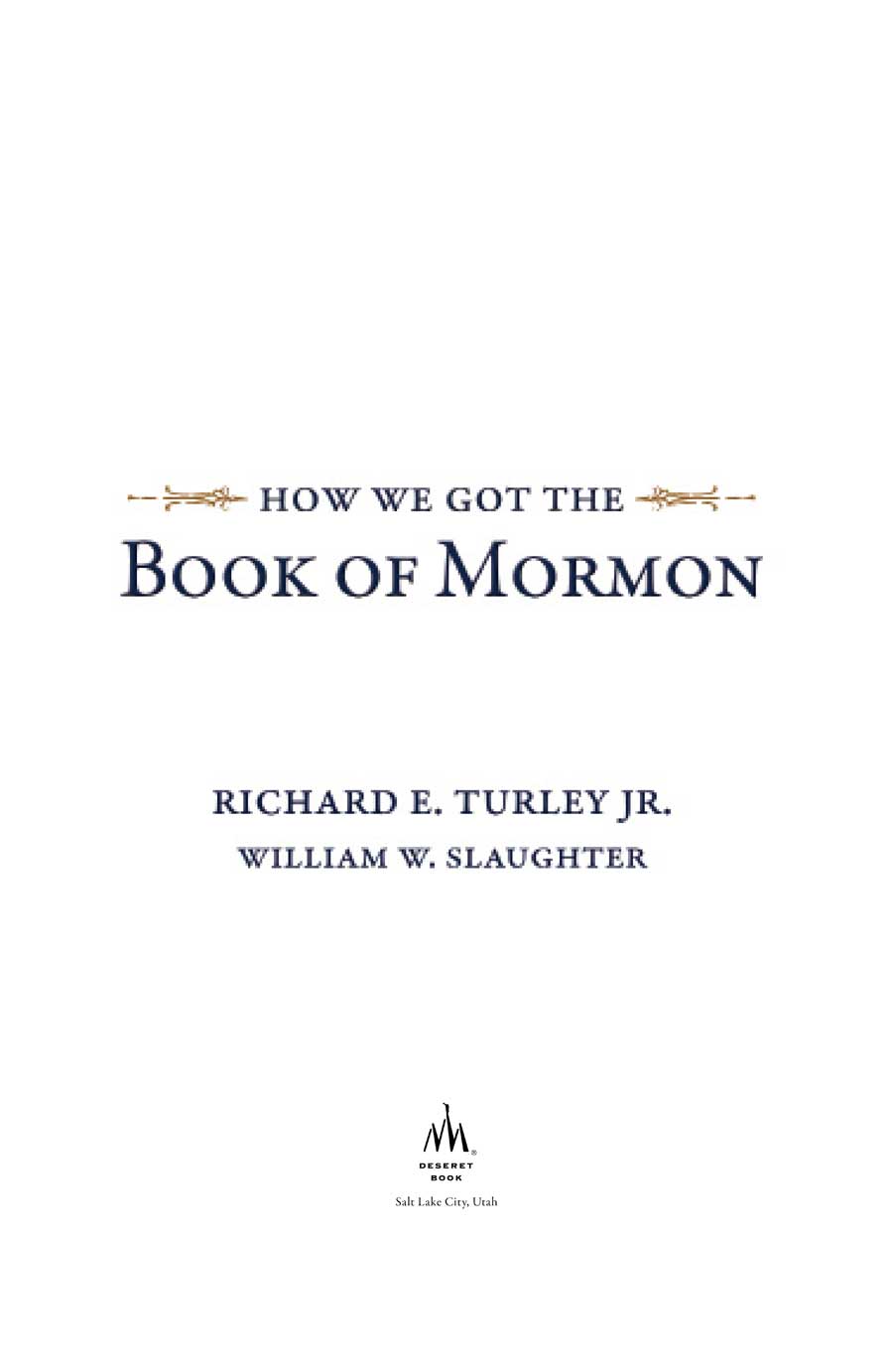2011 Richard E. Turley Jr. and William W. Slaughter.
All rights reserved. No part of this book may be reproduced in any form or by any means without permission in writing from the publisher, Deseret Book Company, P.O. Box 30178, Salt Lake City Utah 30178. This work is not an official publication of The Church of Jesus Christ of Latter-day Saints. The views expressed herein are the responsibility of the author and do not necessarily represent the position of the Church or of Deseret Book. Deseret Book is a registered trademark of Deseret Book Company.
Library of Congress Cataloging-in-Publication Data
Turley, Richard E. (Richard Eyring), 1956 author.
How we got the Book of Mormon / Richard E. Turley, Jr., William W. Slaughter.
pages cm
Includes bibliographical references and index.
ISBN 978-1-60908-062-4 (hardbound : alk. paper)
1. Book of MormonHistory. I. Slaughter, William W., 1952 author. II. Title.
BX8627.T83 2011
298.3'22dc23 2011016377
Printed in the United States of America
Worzalla Publishing Co., Stevens Point, WI
10 9 8 7 6 5 4 3 2 1
Unless noted below, all photographs or images are courtesy of the Church History Library, The Church of Jesus Christ of Latter-day Saints. Used by permission.
Mormon Abridging the Plates, by Tom Lovell. Intellectual Reserve, Inc.
Moroni Hides the Plates in the Hill Cumorah, by Tom Lovell. Intellectual Reserve, Inc.
Photograph of golden plates replica by Steve Bunderson.
Image of printers manuscript; courtesy of Community of Christ.
Panorama of Cincinnati waterfront; 1848 daguerreotype by Charles Fontayne and William Porter. Courtesy of Public Library of Cincinnati and Hamilton County, Ohio.
Photograph of Ebenezer Robinson; courtesy of Community of Christ.
Cornerstone of the Nauvoo House, photograph by George Edward Anderson; courtesy of Harold B. Lee Library, Brigham Young University.
Detail of Herefordshire Beacon, by Al Rounds. Al Rounds; available at www.alrounds.com.
Detail of Port of Liverpool, circa 1840. Steel engraving by J. Godfrey, based on a painting by C. H. Cox. Courtesy of Liverpool History Society.
Preface
We have written this book to help members of The Church of Jesus Christ of Latter-day Saints better understand the history of the Book of Mormon, a work revered as scripture by the Churchs members. Some 150 million copies of the Book of Mormon have been printed in more than 100 languages, reflecting the books growing worldwide influence. Readers can verify the facts in our book by consulting the sources cited in the notes, which we have deliberately tucked in the back so as not to interrupt our narrative.
Our book also contains stories or statements of belief that will be familiar to Latter-day Saints but may seem new or foreign to others. To the latter, we recommend Samuel Taylor Coleridges widely recognized admonition to adopt that willing suspension of disbelief for the moment, which constitutes poetic faith. Doing so will help them better understand what Latter-day Saints believe.
Although we cite scholarly sources, we intend this book for general readers and have followed widely accepted editing practices aimed at ease of reading. For example, we have modernized spelling, punctuation, and capitalization.
We wish to thank the many people who helped make this book a reality. Our book designer, Sheryl Dickert, spent long hours with us, helping to integrate the text and visuals. Matthew Reier took excellent photographs.
At Deseret Book, Sheri Dew, Cory Maxwell, Anne Sheffield, and Richard Erickson encouraged our work from the beginning.
Our colleagues in the Church History Department of The Church of Jesus Christ of Latter-day Saints, at Brigham Young University, and elsewhere provided help and suggestions. Glenn Rowe was endlessly patient in providing access to rare materials. April Williamsen facilitated image and document scanning. Peter Crawley, Matthew J. Grow, Reid L. Neilson, Eric C. Olson, and Royal Skousen provided peer review. Elders Russell M. Nelson, Jeffrey R. Holland, and Marlin K. Jensen generously offered their insights, although we alone are responsible for the volumes final contents.
Finally, we wish to thank our families, especially our wivesShirley Swensen Turley and Sheri E. Slaughterfor their help, support, and patience.
We hope readers find the book interesting, informative, and inspiring.
Notes
Book of Mormon: 150 million copies, Church News, April 22, 2011; Ryan Kunz, 180 Years Later, Book of Mormon Nears 150 Million Copies, Ensign, March 2010, 7476. This book has been published in full in 82 languages and partially in 25 more.
Biographia Literaria (London: William Clowes and Sons, 1817), 145.
Alma 32:27.
Prologue
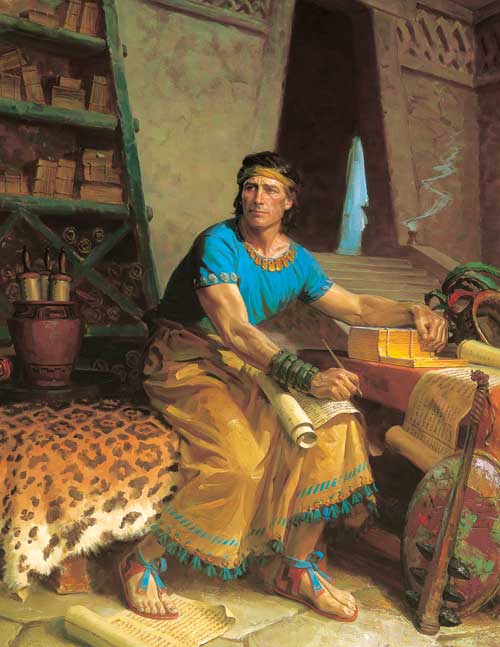
The prophet Mormon.
In a.d. 321, civil unrest reigned among people in the Americas. A gang of thievesthe Gadianton robbersspread across the land, wreaking havoc. Parasites on society, they lived on the labors of others by killing, enslaving, or driving them off and consuming the work of their hands. In time, they would destroy all who would not accept their evil ways and bow to their demands.
The Gadiantons reveled in gold and silver and sought to destroy the sacred records of the Christians, the people who accepted and tried to live the gospel of Jesus Christ. These records inscribed on metal plates had been passed down from generation to generation to preserve the sacred history of the people. Without such records, their faith and language would become corrupted.
In that year of 321, Ammaron, keeper of the records of this Christian people, sensed growing danger and concealed the sacred engravings in a hill, entrusting them to the Lord. Knowing the promises contained in the records, he believed they would someday come forth to bless those who survived the coming devastation.
Perhaps he would be the last to see the sacred writings in his lifetime. Or perhaps there would be another.
There was another. Not long after hiding the records, Ammaron noticed a ten-year-old boy who stood out from others. The boy had a revered nameMormonthe name of his own father, the name of the land where his people had regained their spirituality after wallowing for an era in sin.
At age ten, Mormon had already become, as he himself put it, learned somewhat after the manner of the learning of my people.
Ammaron approached him. I perceive that thou art a sober child, and art quick to observe, Ammaron said. Therefore, when ye are about twenty and four years old I would that ye should remember the things that ye have observed concerning this people.
At that timefourteen years in the futureAmmaron wanted Mormon to go to the hill where the records were stored and take a set of metal plates made by Mormons forefather Nephi. Leave the other records where they are, Ammaron instructed, and write on the plates of Nephi what you have observed about the people.
I remembered the things which Ammaron commanded me, Mormon later wrote. Meanwhile, he kept mental notes on the declining state of his people.
At age eleven, Mormon went south with his father to the land of Zarahemla. The whole face of the land had become covered with buildings, he observed, and the people were as numerous almost, as it were the sand of the sea. That year, war broke out on the outskirts of Zarahemla by the river Sidon. Mormons people won, but the peace lasted only four years.

